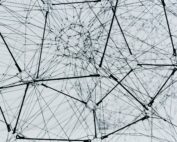What Is Certification in This Context?
Certification involves testing, documenting, and validating that fiber optic or low voltage cable installations conform to specifications set by organizations like:
- TIA/EIA (Telecommunications Industry Association)
- ANSI/NEC/NFPA (National Electrical Code)
- BICSI (Building Industry Consulting Service International)
- ISO/IEC (International cabling standards)
- Manufacturer warranty programs (e.g., Panduit, Leviton, Corning)
Fiber Optic Certification
Tests Required
| Test Type | Purpose | Standard Limit |
|---|---|---|
| Insertion Loss (IL) | Measures signal loss over the link | ≤ 0.5 dB per connector/splice |
| OTDR (Optical Time Domain Reflectometer) | Detects faults, splices, and fiber length | Based on trace quality |
| Optical Return Loss (ORL) | Measures reflection; higher is better | ≥ 20 dB (varies by system) |
| End-face Inspection | Ensures connector cleanliness | No scratches, debris, pits |
Tools Used
- OLTS (Optical Loss Test Set)
- OTDR
- Fiber inspection scope (200x–400x)
- VFL (Visual Fault Locator)
Documentation Includes
- Fiber strand ID
- Cable length
- Connector type and loss
- Test equipment serial number and calibration
- Pass/fail results
- OTDR traces and IL/ORL logs
Low Voltage Cabling Certification (Copper)
Tests Required (Cat5e, Cat6, Cat6A)
| Parameter | Purpose | Required For |
|---|---|---|
| Wiremap | Verifies correct pinout | All cabling |
| Length | Checks for excessive run (max 100m) | All |
| Attenuation | Signal loss per length | Certified installs |
| NEXT / PSNEXT | Crosstalk between pairs | Cat5e+ |
| Return Loss | Reflection due to impedance mismatch | Cat6+ |
| Propagation Delay / Skew | Consistent timing between pairs | Gigabit+ networks |
Tools
- Fluke DSX CableAnalyzer series (industry standard)
- Wiremap/tester (basic verification)
- Tone generator & probe for ID and tracing
Why Certification Matters
| Benefit | Description |
|---|---|
| Warranty validation | Required by most cable manufacturers (e.g., 25-year warranties) |
| Performance assurance | Confirms support for Gigabit, 10G, PoE, or fiber-optic systems |
| Troubleshooting aid | Baseline results help identify future degradation |
| Compliance | Required by TIA/EIA, NEC, BICSI, or local code |
| Client documentation | Shows work was performed to industry standards |


